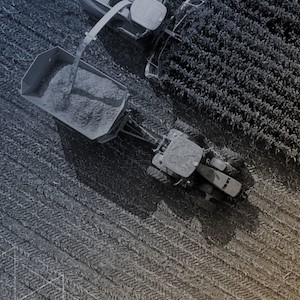Opinion: ROI or Die in Precision Agriculture
The thought of $3.50 corn for the foreseeable future seems pretty disheartening. However, if you look at the precision ag space you might notice some light at the end of the tunnel.
We’ve progressed to a place where we are collecting volumes of good yield, planting, and as-applied data. However, when it comes to using this data beyond looking at a paper map, we really need to admit we haven’t been using it to its full potential. And by “we”, I mean both the precision ag specialist and the grower.
Current technology allows us to marry information layers with our financial information. We can then couple it with current grain markets to determine farm financial performance. This has become a must for any operation. In order for us to weather these lower commodity prices, we are going to need to know “the rest of the story,” as Paul Harvey put it. Preserving and re-allocating working capital within the operation is of utmost importance.
Here are some important working capital allocation questions to consider:
MORE BY BEN D. JOHNSON
Opinion: How to Leverage Precision Agriculture to Launch Your Aggressive, High-Pressure Telemarketing Business
- How is our VRT fertilizer application paying?
- Is there another crop production scenario that would maximize ROI?
- If I showed these improved projections to my banker, would he be a little more generous on my operating loan and the interest rate?
- In a depressed grain market, what am I going to do differently this year in order to improve my outcome to survive to the next growing season?
Imagine being able to identify areas in a field that have been consistently losing $250+ per acre per year over the past 3 years or more. Or how about finding other areas of the farm have production capped at 230 bushels because that’s all you fertilize for? What if you could utilize the data you’ve already taken valuable time and money to collect to give you a better idea of where to spend that exact same $250 to maximize your ROI? How would this change your operation?
The technology to be able to put these layers together to generate profitability zones in a sub-field scale on a map is available and is the sort of tool that will be utilized by the growers who will find their way back to prosperity the quickest. With that in mind, take note of this:
Analyzing profit on a spatial basis trumps EVERYTHING else that we are currently doing in the precision ag space!
As you look at your data in a spatial profitability program, you will notice that yield is not the only major determining factor to profitability and you can potentially improve your profitability without raising more bushels by simply finding areas in your field where you are investing your money inefficiently. Yes, this might require taking a good, long look at the quality of your data; but for many growers utilizing a spatial profitability analysis program could literally mean the difference between staying in business or going broke!
Not every grower has the time or is tech savvy enough to do this effectively. The same can be said about doing taxes, and that’s why most of us hire accountants. If you struggle with something like inputting your data into any of the popular web-based GIS software programs, then it’s important to have someone from outside your operation to assist you using the wonders of modern ag-tech. Your trusted precision ag advisor, if equipped with the right tools, may be able to help you with this.
What is Wrong with Using Spreadsheets?
I know a lot of people say spreadsheets are a great tool to measure profitability. However, with the data layers we have collected showing sub-field placement of our variable inputs it’s clear that spreadsheets are unable to accurately measure the variable profitability within the field. The new technology is all about managing profitability on a sub-field basis and you will find that spreadsheets just won’t cut it as a way of measuring that. I officially thank spreadsheets for their years of service in helping us determine “whole field” or “whole farm” profitability, but now it is time for spatial profitability analysis programs to take over that role.
I know this may be a big change for people, but it’s no different than when we moved from typewriters to computers for word processing a few decades ago. A new piece of technology was developed and everyone adapted without looking back. This is exactly what is happening with new GIS software technology and the growers who adopt it first have an advantage over the ones who drag their feet in adopting this technology. I encourage you to talk to your trusted precision ag advisor and ask how to improve your working capital allocation and return on investment by using this new technology.










